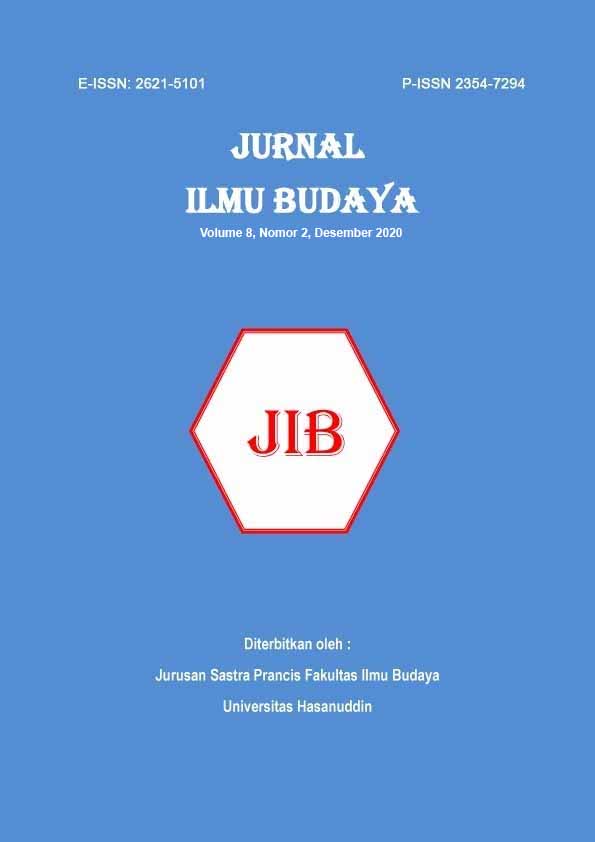PROBLEM-BASED GROUP DISCUSSION: AN EFFECTIVE ELT TECHNIQUE TO IMPROVE VOCATIONAL HIGH SCHOOL STUDENTS’ TRANSACTIONAL SPEAKING SKILLS
DOI:
https://doi.org/10.34050/jib.v8i2.11032Keywords:
speaking skills, transactional speaking skills, problem-based group discussionAbstract
In this millennial era, English speaking skills are very necessary for young learners, especially for Vocational High Schools students. However, few teachers still have difficulties in choosing the right technique to teach the speaking skills. Consequently, students feel that speaking is the hardest skill in English. This paper is aimed at discussing how to improve the students’ transactional speaking skills (group discussion) using problem-based group discussion technique at Vocational High School 5 Gowa. A quantitative research design was used to carry out this study with support from the data collection instrument i.e. speaking video test (group discussion). The design of this study conducted using a quasi-experimental with nonequivalent control group design. Twenty (20) students in two classes i.e. ten students for the experimental class and ten students for the controlled class of the intermediate level were purposively selected to participate in this study. The results of this study showed that the problem-based group discussion technique is able to improve students’ transactional speaking skills. It was proved by the result of the statistical analysis of the level significance P = 0.05 with the degree of freedom (df) = 9 indicated that the t-test values of the students’ transactional speaking skills (3.498) was higher than the t-table value (2.262). The outcome of this research indicates that this technique is effectively able to improve the students’ transactional speaking skills in exchanging information, taking a part in formal discussions and even learning to work in real-life situations
References
Andi, K., & Arafah, B. (2017). Using needs analysis to develop English teaching materials in initial speaking skills for Indonesian college students of English. The Turkish Online Journal of Design, Art and Communication (TOJDAC), Special Edition, 419-436
Arafah, B., & Kaharuddin, A. (2019). The Representation of Complaints in English and Indonesian Discourses. Opción, 35, 501-517.
Arafah, B., & Hasyim, M. (2019). The Language of Emoji in Social Media. KnE Social Sciences, 494-504.
Bahar, A. K. (2013). The Communicative Competence-Based English Language Teaching. Yogyakarta: TrustMedia.
Bahar, A.K (2014). Transactional Speaking Skills: A Guide to Improve Transactional Exchange Skills in English for Group Discussions (GD)and Interviews. Gowa: Gunadarma Ilmu.
Bahar, K. (2013). The Communicative Grammar Translation Method: An Integrated Method of CLT and GT for Teaching English Communicatively and Accurately. Yogyakarta: Trustmedia.
Bahar, K. (2014). Interactional Speaking a Guide to enchance Natural Communication Skills in English. Yogyakarta: TrustMedia Ethnologue.
Bahar, A. K., & Latif, I. (2019). Society-based English community (SOBAT): EFL learners’strategy in learning and practicing English outside the walls. Jurnal ilmu budaya, 7(2), 255-265.
Brookfield, S. D., & Preskill, S. (2016). The discussion book: 50 great ways to get people talking. John Wiley & Sons.
Frey, F. (2017). SPSS (Software). The International Encyclopedia of Communication Research Methods, 1-2.
Hussain, S. (2018). Teaching Speaking Skills In Communication Classroom. ResearchGate (https://www. researchgate. net publication).
Heaton, J. B. (1975). Writing English language tests: A practical guide for teachers of English as a second or foreign language. Longman Publishing Group.
Kaharuddin, Hikmawati, Arafah, B. (2019). Needs Analysis on English for Vocational Purpose for Students of Hospitality Department. KnE Social Sciences, 344-387.
Kaharuddin, N. (2014). The Problems of Indonesian College EFL Learners in Listening Comprehension. Jurnal Ilmu Budaya, 2(2).
Kaharuddin, K. (2016). Detecting Errors in English Made by Intermediate Indonesian Learners of English in English Department Students of STAIN PAREPARE. KURIOSITAS: Media Komunikasi Sosial Keagamaan, 9(1), 1-19.
Kaharuddin, A., & Latif, I. (2017). The Essential of Discourse Analysis for Teachin English as a Foreign Language.
Kaharuddin, A. (2018). The Communicative Grammar Translation Method: A Practical Method to Teach Communication Skills of English. ETERNAL (English, Teaching, Learning, and Research Journal), 4(2), 232-254.
Kaharuddin, A. (2019). The Power of English: Recognizing and Utilizing The Tremendous Impact Of The English Language On The Community. English Language Teaching for EFL Learners, 1(1), 39-48.
Kaharuddin., & Hasyim, M. (2020). The Speech Act of Complaint: Socio-Cultural Competence Used by Native Speakers of English and Indonesian. International Journal of Psychosocial Rehabilitation, 24(6), 14016-14028. doi: 10.37200/ijpr/v24I6/pr261351
Nasution, R. (2003). Teknik Pengambilan Sampling. Fakultas Kesehatan Masyarakat Universitas Sumatra Utara, 1, 1–7.
Nuha, U. (2014). Transactional and Interpersonal Conversation Texts in English Textbook. Register Journal, 7(2), 205-224.
Richards, J. C. (2008). Teaching listening and speaking. Cambridge, England: Cambridge university press.
Richards JC. (2015). Developing classroom speaking activities: From theory to practice. Guidelines-Singapore-Periodical for Classroom Language Teachers then Magazine for Language Teachers. 2;28(2):3.
De Grave, W. S., Schmidt, H. G., & Boshuizen, H. P. (2001). Effects of problem-based discussion on studying a subsequent text: A randomized trial among first year medical students. Instructional Science, 29(1), 33-44.
Setiadi, M. A. (2012). Using Communicative Language Teaching (Clt) Approach Through Small Group Discussion as a Device to Stimulate the Students to Speak in English. Exposure, 1(2), 223-233.
Wilkinson, K., & Barter, P. (2016). Do mobile learning devices enhance learning in higher education anatomy classrooms?. Journal of Pedagogic Development, 6(1), 14-23.
Yassi, A. H. Kaharuddin (2018). Syllabus Design Of English Language Teaching. Jakarta: Prenada Media.
Zareie, B., Gorjian, B., & Pazhakh, A. (2014). The effect of interactional and transactional speaking strategies on teaching speaking skills to Iranian EFL learners at senior high school level. International Journal of Language Learning and Applied Linguistics World (IJLLALW), 5(2), 443-459.
Zhang, M., Lundeberg, M., & Eberhardt, J. (2011). Strategic facilitation of problem-based discussion for teacher professional development. Journal of the learning sciences, 20(3), 342-394.
Downloads
Published
Issue
Section
License
Copyright (c) 2020 JURNAL ILMU BUDAYA

This work is licensed under a Creative Commons Attribution-NonCommercial 4.0 International License.


